What is Artificial Intelligence?
Since the term Artificial Intelligence (AI) was coined back in 1956, there have been many attempts to provide a great definition of AI. This has proven difficult due to the many types and levels of intelligence.
At AiLab, we think of AI as being...
The design and development of computer systems that have the knowledge and skills required to perform the tasks which usually require human intelligence to undertake.
or, more simply...
Getting a computer to do all the stuff that we humans are really good at!
The field of AI aims to understand how humans perceive, interact and make decisions to create machines that rival human competence in a wide range of tasks.
Narrow AI is the term used to describe computers that can be programmed to perform a single task as well as, or even better than a human e.g., recognising an object in a photograph, spam filtering, route mapping, etc.
The term Artificial General Intelligence (AGI) is used to describe computers that can undertake all the things a human can do e.g., recognise a range of different objects, navigate all environments, make informed decisions, generate useful plans, etc.
A more recent discussion has been around the development of computer systems that outperform humans – something called Artificial Super Intelligence (ASI).
As you’ll see throughout AiLab (via resources, interviews and articles), Artificial Intelligence is currently working within the scope of Narrow AI.
The study of Artificial Intelligence
AI researchers are interested in developing software that can perform tasks where humans excel e.g., learning, planning, language and decision making.
For many AI scientists, the goal of designing and building an Artificial Intelligence does not necessarily depend on creating a conscious, thinking machine. In other words, the computer is just a tool to create useful software without any effort to simulate the cognitive states found in humans. At best, these systems are just a simulation of intelligent behaviour – this is referred to as Weak AI.
On the flip-side, Strong AI is the term given to any computer system that exhibits consciousness and can think for itself - in other words, a computer system that does model cognitive states. For a long time, AI researchers and philosophers have argued whether building thinking machines is even possible.
AI Tools and Techniques
Much of the confusion around AI surrounds the terminology, for example, how are Symbolism and Connectionism different? What is a Neural Network and what does it it mean when we say they are Black Boxes?
Often even the main terms of Artificial Intelligence (AI), Machine Learning (ML), Artificial Neural Networks (ANN) and Deep Learning (DL) are used incorrectly and interchangeably, when in fact, each are subfields of the former!
The field of AI contains many different AI tools and techniques to solve difficult problems. Some of these AI techniques include: Genetic Algorithms, Decision Trees, Expert Systems, Neural Networks, Swarm Intelligence, Hybrid Systems – to name but a few.
Our AI Glossary can help out with some of these questions and our AI Resources provide more information about building and using AI-based systems.
Do we have intelligent machines?
Recently huge advancements in AI (mostly due to Deep Learning) has seen some very well-known scientists and technologists start to talk about the threats posed by creating true Artificial Intelligence (Strong AI / ASI). The worry is that a machine that is more intelligent than us and that can make conscious decisions may decide that humans are no longer necessary.
Discussions around the AI ‘Singularity’ (the point where ASI is achieved), although important, are still very much in the realm of philosophy. Even with the impressive progress within AI in the last few years, there is still no clear path for us to be able to create thinking, conscious machines.
Current state of AI
Many of today's AI techniques make use of, or are based on techniques that have been around for 30 or more years. If this is the case, how is it that we’re only now seeing AI achieve incredible results and becoming more mainstream?
Recent progress in AI has been driven by:
- Data: It’s now much easier to collect and store large amounts of data that can be used in AI systems to find previously unknown insights.
- Processing Power: Cloud providers (such as Microsoft, Amazon and Google) provide virtually unlimited computing resources to run the computer programs that power AI.
- Tools and Frameworks: Many of the same companies that provide computing resources have also made available their code that allows developers to build AI systems.
Artificial Intelligence systems can now successfully navigate autonomous vehicles through many terrains. We have computer systems that carry out actions based on our spoken commands (e.g., Siri, Alexa, Cortana). Computer vision software has learnt to recognise certain medical conditions from X-rays better than human doctors. Spam email is kept under control by AI and smart shopping algorithms can help recommend possible purchases based on our past buying habits. Even more recently, Large Language Models (LLM) - such as ChatGPT - offer human-like conversations and provide natural language user interfaces to search engines.
The field of AI is moving so quickly it can be difficult to keep up with all the progress. AiLab’s mission is to keep you up-to-date and informed about the latest news and articles on AI, and provide a wealth of resources (including workshops and presentations) to help you navigate the ever changing Artificial Intelligence landscape.



